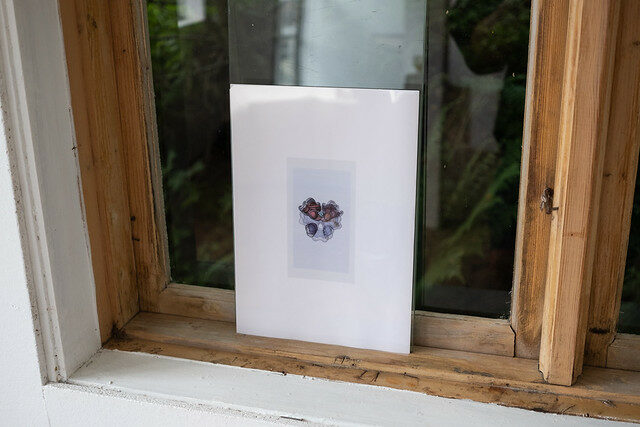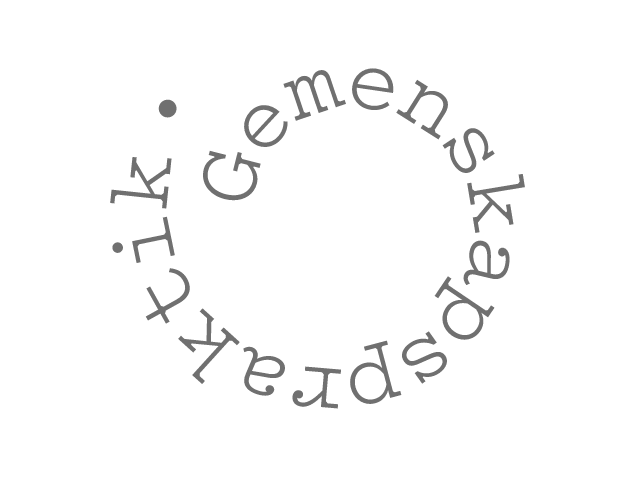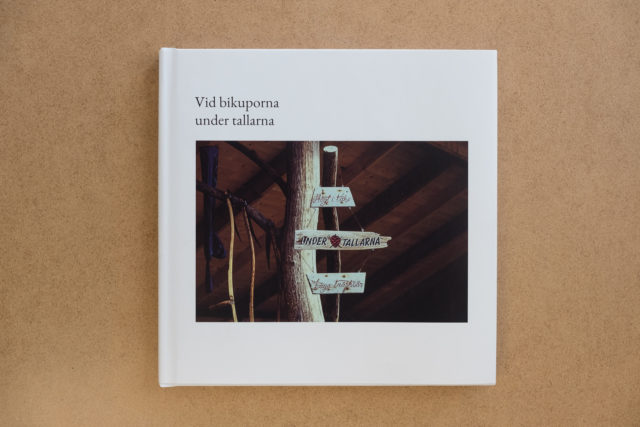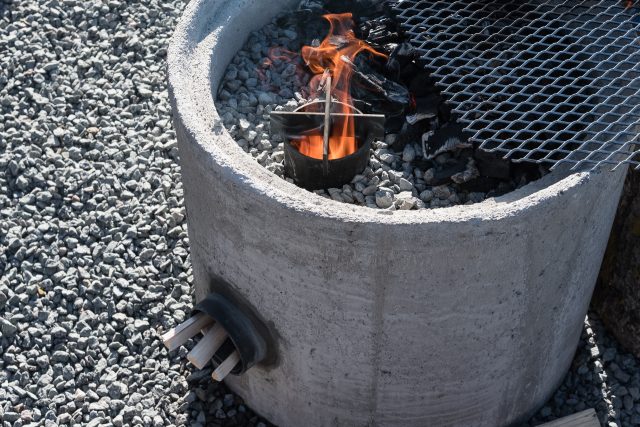
[Explorative rendering of the Honeybee Standard Brain. Tomma rum, Vännersta 2021.]
The Honeybee Standard Brain (see explorative rendering above) is a three-dimensional atlas of a honeybee brain assembled by the Menzel Neurobiology group at Frie Universität Berlin based on images of bee brains taken with confocal microscope. It serves as a tool for comparing shapes and structures of bee brains and relating the brain to functional properties.
The honeybee brain is smaller than one cubic millimeters and has about 950 000 neurons. The human brain, in comparison, has almost one hundred thousand times more neurons (about 85 billion) and is more than one million times larger (about 1200 cm3). Despite its minuscule brain size, and 600 million years of evolutionary divergence from vertebrates, the honey bee exhibits complex and rich social and individual behaviour in many ways similar to humans. There is a complex division of labor in the hive and individual honey bees vary dramatically in their behaviour due to genetic, developmental, and physiological differences. Bees master different forms of learning including categorisation, contextual learning and rule abstraction and exhibit a richness of experience-dependent behaviour.
The honeybee has been subjected to a variety of behavioural studies in areas such as navigation, social organisation, and learning and is considered to have great potential as a model for exploring interactions between environment, behaviour and brain structure. Although understanding how experiences are represented in brains and shape future responses is a major challenge in behaviour studies researchers in animal cognition believe that there is a fair chance to understand complex behaviour in bees, and to identify neurobiology underlying such behaviour.
While nowhere near a complete overview of what is known about what goes on in the bee brain, a sample of scientific research papers on neuroscience and cognition related to bees gives some indication of the honeybee brain’s complexity:
– Olfactory (smell) stimuli are first processed in the antennal lobe, and then transferred to the mushroom body and lateral horn in the bee brain. Studies show that honeybees can perform elemental learning by associating odour with a reward signal even after damage to the pathways to the mushroom bodies. Further, research also show that bees might learn to solve positive patterning tasks in addition to elemental learning and olfactory generalisation without the contribution of the mushroom bodies. However, the mushroom bodies may be required for negative patterning. An example of positive patterning in the case of bees would be that bees learns that two different odours when presented together means a reward of sucrose solution. Negative patterning would mean that when one of two odours is available, but not both at the same time, then that means a sucrose reward.
– High concentrations of octopamine, dopamine, serotonin and tyramine, exist in bees nervous systems and function as neurotransmitters, neuromodulators and neurohormones. Dopamine and serotonin are present in high concentrations in the bee brain, whereas octopamine and tyramine are less abundant. Octopamine generally has an arousing effect and leads to higher sensitivity for sensory inputs, better learning performance and increased foraging behaviour. Tyramine has been suggested to act antagonistically to octopamine, but only few experimental data are available for this amine. Dopamine and serotonin often have antagonistic or inhibitory effects as compared to octopamine. When bees are under stress the brain levels of octopamine and dopamine are depressed, which appear to affect worker bees sense of reward when foraging, making them fly slower between the hive and a food source. The presence of large predators elicits the release of an alarm pheromone, carried by the bees’ stinger, which alerts and recruits more defenders to organize a collective attack. The alarm pheromone increases serotonin levels in the bee brain, thereby lowering the stinging threshold of bees exposed to the pheromone.
– Honey bee queens produce a sophisticated array of pheromones that influence both the behaviour and the physiology of their nest mates. Most striking its the effect of queen mandibular pheromone, a chemical blend that induces young workers to feed and groom the queen and primes bees to perform colony-related tasks. Studies reveal that queen mandibular pheromone has profound effects on dopamine pathways in the brain and that these pathways play a central role in behavioural regulation and motor control. However there is a substantial variation in worker bees attraction to queen mandibular pheromone among individuals, and this variation is linked with specific differences in physiology and brain gene expression patterns.
– Neuronal signalling demands a high rate of energy consumption. Brain energy metabolism in bees powers information processing and behaviour in bees. When faced with limiting food resources, it seems that bees invest in their heads at cost of body size. However, this is not reflected in brain development. When fed more bees heads get bigger but not their brains. Recent research also suggests that there is a relationship between aggressive behaviour and energetics. When bees are aggravated they reduce their brain metabolism, the reason for this is not yet clear, but it is possible that aggravated bees, unlike mammals, reduce their neural activity in order to divert resources to muscles.
– Caffeine, which Coffea and Citrus plants use as a herbicide and insecticide, enhances bees memory of reward, and makes them more likely to remember a learned floral scent. Kenyon cells in the mushroom bodies of the bee brain integrate sensory input during associative learning and are involved in memory formation. Researchers have found that caffeine increase the excitability of the Kenyon cells.
– Nicotine, which is a natural herbivore defence toxin in plants, facilities olfactory (smell) learning in bees. Researchers have found four nicotinic receptors in the honeybee brain which are expressed in different brain regions, including the antennal lobes, which are the first relay of olfactory information from the bees antennae.
– Honeybees use celestial cues such as polarized light as a compass reference, and image movement across the retina to measure distance in order to navigate. Researchers believe they have found a complete circuit for path integration and steering in bees central complex.
– Attention allows animals to respond selectively to competing stimuli, enabling som stimuli to evoke a behavioural response while others are ignored. How brains does this remains unknown, although it is increasingly evident that even animals with the smallest brain display this capacity. When bees are presented with competing visual objects brain activity increases in the optic lobes and priced behavioural choices; this suggest that bees attention-like processes are pushed far out in the sensory periphery of the brain.
– Valence encoding is an important behavioural trait that enables individuals to distinguish between positive and negative situations. In bees neural activation patterns are distributed across distinct parts of the brain, suggesting that discrete circuits encode positive or negative stimuli. Researchers have found that the valance of social interactions is represented by distinct anatomical subregions of the bee brains mushroom bodies.
– Honeybees brain structure is plastic and responds to new experiences and environmental changes long after brain development is complete. Honeybees express pronounced age dependent specialisation when switching from various indoor duties to foraging outside the hive, which is accompanied by volume and neuronal changes in the brain and increased messenger RNA for genes in the brain. For example, the mushroom bodies are regions of the central brain important for sensory integration and learning. Their volume is influenced by behaviour and environment throughout a bees life, and become larger in bees who spend time foraging outside of the hive than in nurse bees who only spend time inside the hive. The complexity of neurons in the mushroom bodies of honeybee brains increases as a function of age, but foraging experience promotes additional neuronal branching and growth. A variety of proteins are expressed to different degree in the brains of nursing bees and foraging bees and are believed to be related to behaviour changes in bees.
– Experiences during early adulthood shapes the learning capacities and the number of synaptic boutons which facilities connections between neurons. Specifically, olfactory (smell) learning is impaired in bees who doesn’t experience the rich in hive environment during maturation. When bees are artificially reared the mushroom bodies of their brains are smaller than bees brought up in a hive, however their total brain size is the same and they show the same elemental learning abilities as in-hive reared bees. The mushroom bodies, and more specifically the lateral calyces, are smaller at emergence in artificially-reared bees compared to the in hive control. This may impair higher order cognitive functions, such as non-elemental learning tasks, which do not become evident when bees are faced with simple associated learning tasks.
– When bees are exposed to an intruder it leads to an immediate attack. It also leads to long-term changes in behaviour in response to a second intruder, and increases the probability of responding more aggressively to another intrusion. This can be correlated to expressions of genes in the honey bee brain, which suggest that social challenges temporarily change the neurogenomic state in bees brains and is likely to influence future behaviour.
– Young adult honey bees work inside the beehive “nursing” brood around the clock with no circadian rhythms while older bees forage for nectar and pollen outside with strong circadian rhythms. At the molecular level, findings suggest a link between honey bee foraging behaviour and up regulation of period messaging RNA in the brain. Foragers are the only behavioural group that consistently have high average daily levels. In addition, period messaging RNA levels vary in young bees dependent on their social environments. Taken together, these results suggest that social factors influence period messaging RNA expression in the bee brain and the regulation of clock genes and circadian rhythms.











